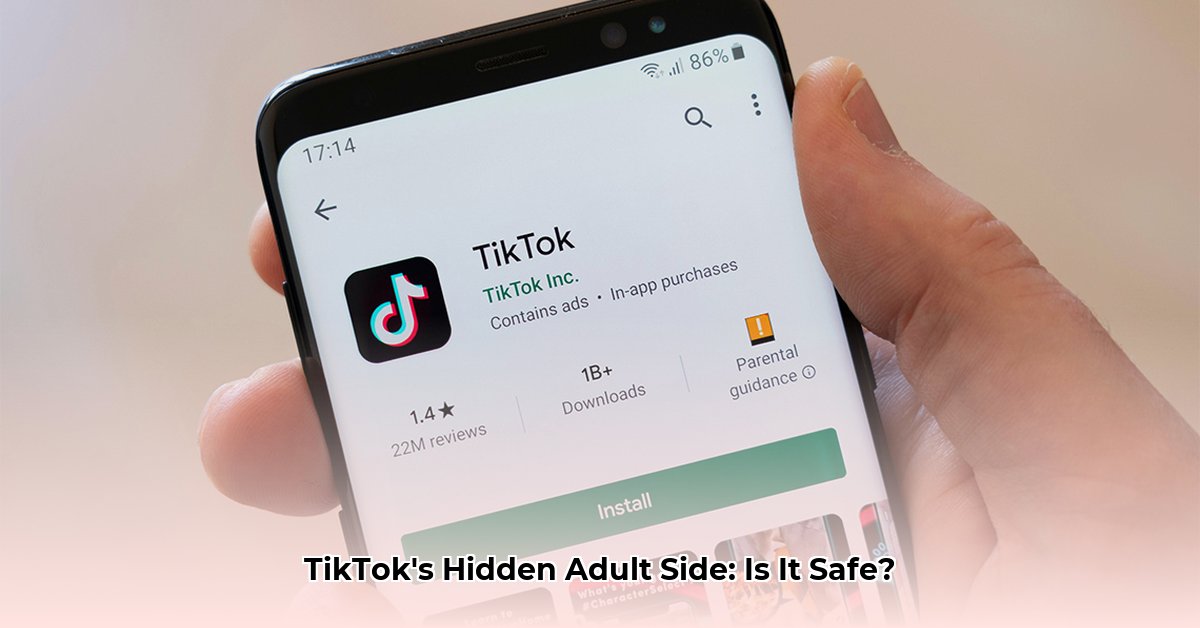
TikTok's explosive growth presents a significant challenge: safeguarding younger users while allowing adults unrestricted access. This report analyzes TikTok's approach to adult content moderation, examining its effectiveness, identifying shortcomings, and proposing actionable solutions. The platform's intricate balancing act between freedom of expression and user safety demands a comprehensive investigation.
Navigating the Adult Content Tightrope: TikTok's Balancing Act
The core challenge for TikTok is balancing its role as a platform for creative self-expression with the imperative to protect its younger users from harmful or inappropriate content. Its current strategy combines community guidelines, age verification, algorithmic filtering, and user reporting. However, inconsistencies in enforcement and a lack of a dedicated adult section create vulnerabilities. This necessitates a robust and adaptable system for content moderation.
The Current System: Reactive vs. Proactive Moderation
TikTok's approach is largely reactive, relying heavily on user reports to identify and remove inappropriate content. While this provides a valuable feedback loop, it's insufficient for proactive content moderation. The platform's powerful recommendation algorithm, while adept at personalizing user experiences, can inadvertently expose minors to unsuitable material. This inherent tension requires a shift towards more proactive measures. How can a platform leverage personalization without compromising safety?
The Algorithm: A Double-Edged Sword
TikTok's algorithm is a powerful tool for content delivery, but its capacity for personalization also facilitates the spread of inappropriate content. Its ability to identify and suggest videos users will enjoy can be exploited to promote harmful material, effectively creating an echo chamber of undesirable interactions. This underscores the critical need for robust content filtering integrated directly into the algorithmic process. How can TikTok harness its algorithmic power while simultaneously mitigating the risks?
Age Verification: A Necessary but Imperfect Solution
Age verification is a cornerstone of responsible content moderation, but its effectiveness on TikTok is questionable. The reliance on self-reported ages highlights a significant weakness, as users can easily circumvent these checks. The lack of robust verification mechanisms leaves minors vulnerable to exposure to inappropriate content. How can TikTok improve its verification methods beyond self-reporting?
Tackling the Challenges: Short-Term and Long-Term Strategies
Addressing the issues requires a three-pronged approach involving TikTok, users, and regulators.
Short-Term Goals (Next 1-2 Years)
- Enhanced AI Filters: TikTok's technical team should refine its AI-powered filters to more effectively detect and remove inappropriate content, improving both accuracy and speed of identification.
- Improved Age Verification: Implement more stringent age verification methods, potentially incorporating biometric data or government ID verification, improving accuracy and reducing successful circumvention.
- Streamlined Community Guidelines: Clarify and simplify community guidelines for easier user understanding and enforcement, potentially leveraging multilingual support.
- Enhanced Reporting System: Enhance the user reporting system, ensuring quicker response times, clearer feedback mechanisms, and a transparent appeals process to boost user trust and engagement.
- Proactive Legal Compliance: TikTok’s legal team must ensure complete compliance with all relevant laws and regulations, proactively addressing potential legal issues involving harmful content and preparing for evolving legislation.
Long-Term Goals (3-5 Years and Beyond)
- Proactive Content Moderation: Invest in preventative measures to intercept inappropriate content before it reaches users, possibly by leveraging advanced AI and machine learning techniques.
- Contextual Content Routing: Develop a system that dynamically routes content based on user age and reported preferences, improving the safety and relevance of the experience.
- AI-Enhanced Contextual Understanding: Integrate AI capable of understanding the subtle context of videos, identifying inappropriate material that might evade keyword-based filters.
- Proactive Legal Adaptation: The legal team should develop forward-looking strategies to anticipate and adapt to changing laws and regulations regarding online child safety.
- Collaborative User Engagement: Foster open communication between TikTok and its users, incorporating user feedback into the development and refinement of its content moderation systems.
- International Regulatory Cooperation: Promote international collaboration and the sharing of best practices with global regulatory bodies to ensure consistent child safety standards across borders.
Understanding the Risks: Mitigation Strategies
The following table summarizes key risks and potential mitigation strategies:
| System Component | Risk Likelihood | Consequences | Mitigation Strategies |
|---|---|---|---|
| AI Content Filters | Moderate | Inappropriate content bypassing filters | Continuous algorithm improvement, human review, regular audits, contextual analysis. |
| Age Verification | High | Minors accessing adult content | Multi-factor authentication, government ID verification, biometric authentication. |
| Enforcement of Community Guidelines | Moderate | Inappropriate content remaining visible | Improved reporting, faster response times, transparent appeals process, community policing. |
| Algorithmic Recommendations | High | Inappropriate content suggested to minors | Contextual awareness in the algorithm, stricter content tagging, age-based filtering. |
The Path Forward: A Collaborative Effort
Creating a safer TikTok requires a collaborative effort. TikTok must invest in advanced technology and improve its processes. Governments must enact and enforce clear regulations. Parents and educators must equip children with the tools to navigate the online world safely. A holistic and adaptive approach, informed by continual feedback and research, is crucial. The future of TikTok's safety hinges on this shared responsibility.
⭐⭐⭐⭐☆ (4.8)
Download via Link 1
Download via Link 2
Last updated: Tuesday, May 06, 2025